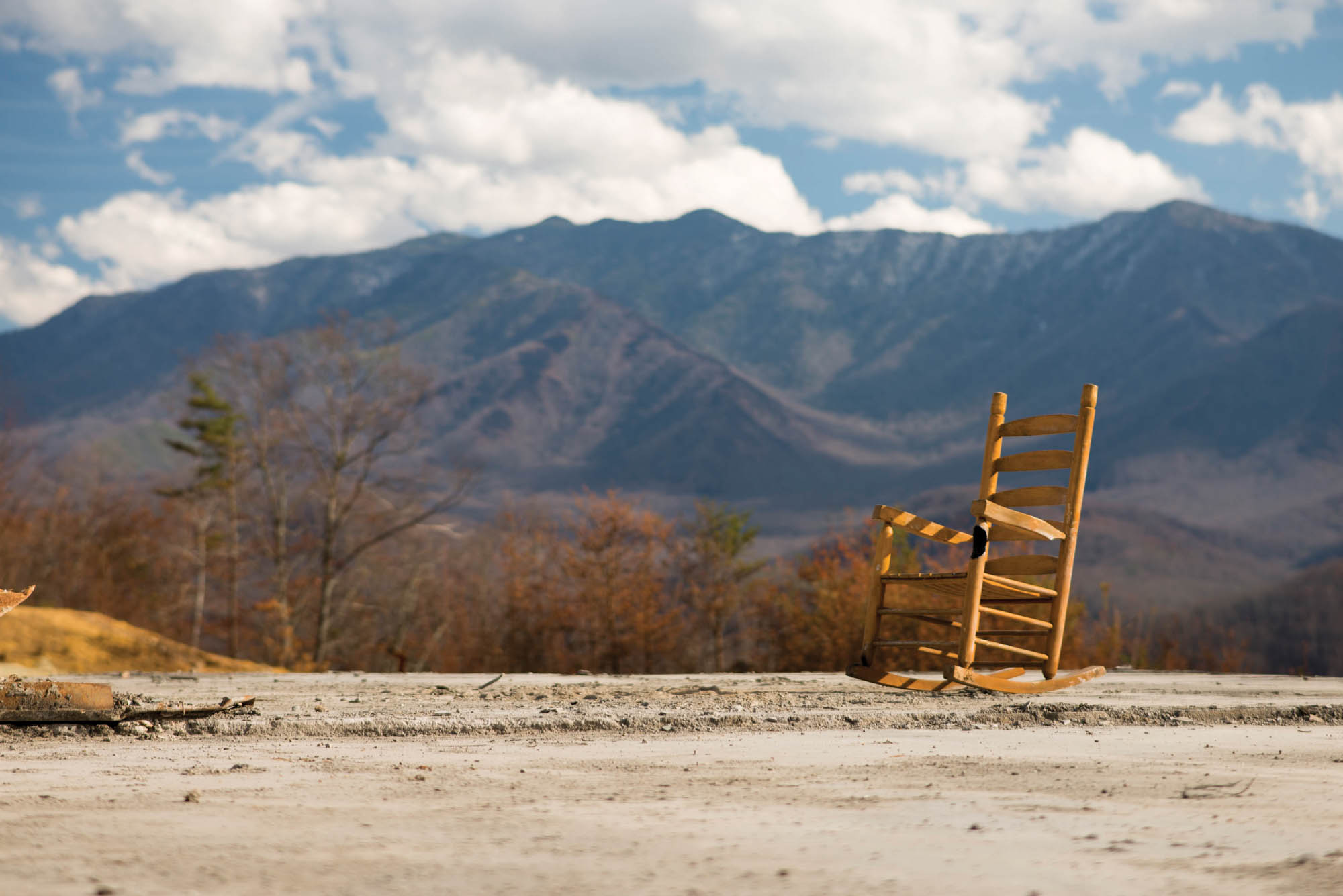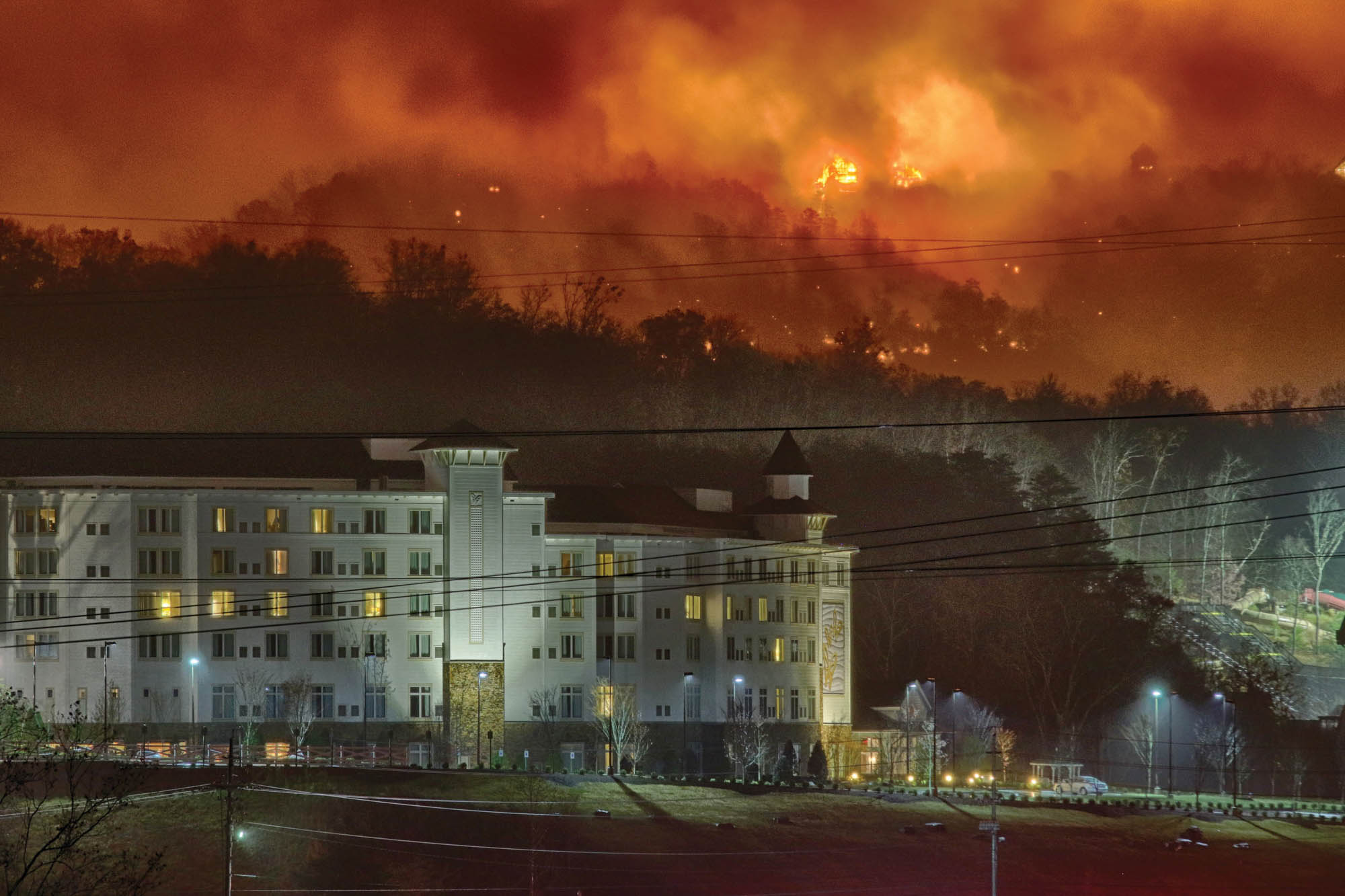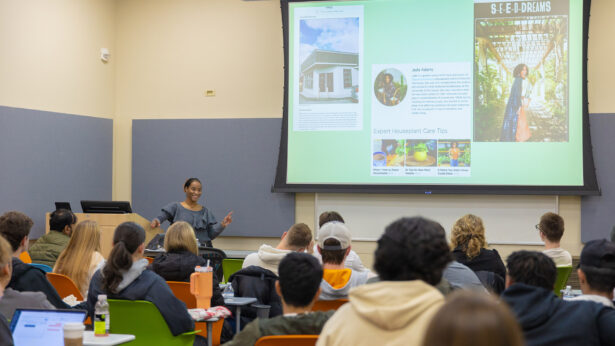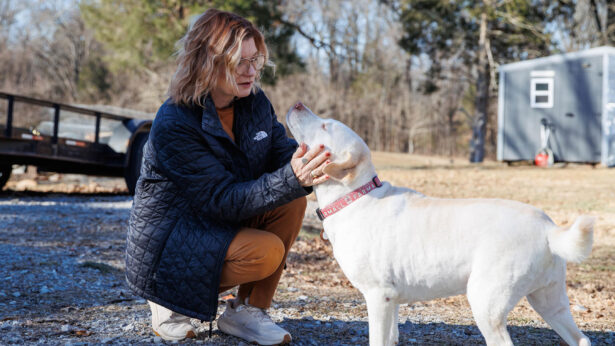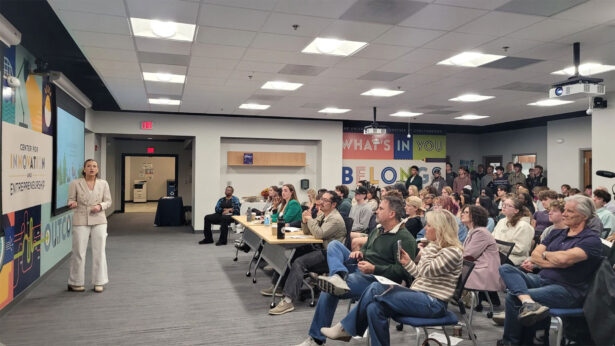By Jennifer Sicking
Featured photography and video by Adam Brimer
On Nov. 28, 2016, a wildfire raced from the Great Smoky Mountains and into nearby communities. These are the stories of loss and hope experienced by the UT family.
The rain came too late. And, in its coming, pushed destruction before it.
Since July 2016, the Southern Appalachians had baked under an unrelenting summer sun. The ground cracked to dust, grass shriveled brown and once-flowing creeks slowed to trickles. Still, people waited as the warmer-than-usual temperatures lingered and the rain stayed away. By late autumn, in the dryness, the fires started, some helped by human hands, some not. And they burned, thickening the very air with smoke.
Firefighters fought to contain them. But some, miles from towns, burned on, consuming years of fuel—fallen leaves, logs, dead grass and trees—and working as an efficient recycler of nutrients and making way for regrowth out of the empowered soil.
Then came the wind on Nov. 28, when a strong cold front moved into East Tennessee and Great Smoky Mountains National Park. Wind gusts reported as high as 70 mph pushed across the mountains, bending trees, swirling leaves and throwing burning embers.
The Chimney Tops 2 fire—so named for being the second burning near the Chimney Tops hiking trail—found the air and fuel it needed to become a wildfire. It ran before the wind across ridges and down mountainsides. The eight miles between its genesis and the town of Gatlinburg disappeared under the racing fire.
An hour away in Knoxville, Buddy McLean (Knoxville ’70), owner of the Lodge at Buckberry Creek in Gatlinburg, answered his cell phone and listened as two employees reported worsening smoke.
“If you feel in danger, evacuate,” he told them.
“When the mountains come up this spring, they will be beautiful again. The great thing is they were not scarred like they could have been.”
—Buddy McLean (Knoxville ’70) owner of the Lodge at Buckberry Creek in Gatlinburg
Less than an hour later, McLean was driving to Gatlinburg when they called again. They could see fire coming down the mountain. The employees, 20 dinner guests and guests staying in the four booked rooms, fled in cars and a motorcycle down Ski Mountain Road, in parts a narrow cement ribbon separating walls of fire.
In downtown Gatlinburg, McLean parked and struggled to open his car door against the buffeting wind. As police cars and fire trucks roared past, he stood, watching the red glow on the mountainside, and wondered about the property his grandfather, Victor McLean Sr., bought in 1945. His grandfather was a land developer who dreamed of building a hotel on the site. McLean and his brother fulfilled that dream when they opened the urban-rustic, Adirondack-style boutique hotel in 2005. Decorated with antiques and family heirlooms like the painting of his maternal great grandfather, Edward Mynatt, who prosecuted the notorious White Caps, a vigilante group in Sevier County, they filled the rooms with welcome and stories. Guests became friends during stays in the Lodge at Buckberry Creek.
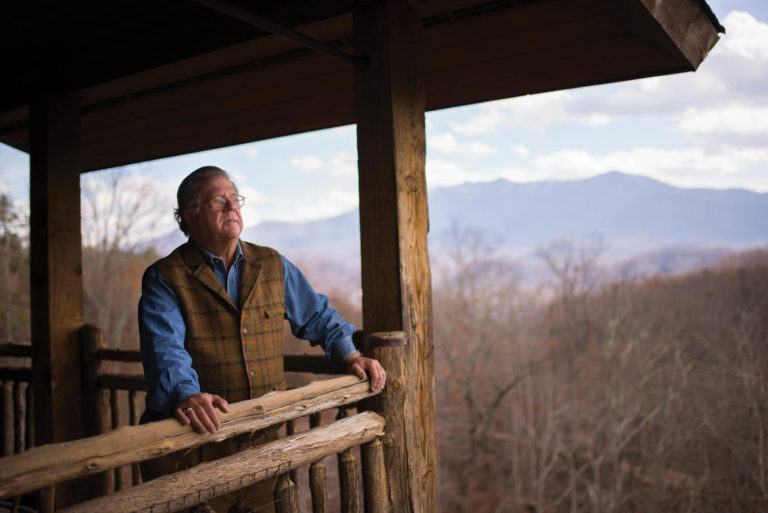
On the streets of Gatlinburg, McLean could only watch the fire on the mountain and wonder if the lodge would burn. When he realized he was the only civilian in a downtown filled with police officers and firefighters rushing to calls, he drove to Pigeon Forge, where his employees and Jeanie Johnson, his business partner, waited. Johnson, who owns the decorating firm HouseBones, also had received a call from employees about the fire on the mountain.
As Johnson waited in her car at a Pigeon Forge motel parking lot, the long-awaited rain began to fall.
But fires burned on, fueled by 80 years of detritus that littered the ground.
Before the formation of Great Smoky Mountains National Park in 1934, fires regularly passed through the Southern Appalachians. About every 10 years, fires purged the land, according to research by Henri Grissino-Mayer, a UT Knoxville professor of geography.
A cross-section of a table mountain pine tree—killed by southern pine beetles in 2003—underscores that research. The tree began its life in Cades Cove in 1820 and shows its first fire scar in 1832. It survived 11 fires before 1934 and none after, when the property became part of the park and fires were suppressed.
“This tree was an example of a tree’s ability to record numerous low-intensity fires, which the fires were before 1934, that scarred but did not kill the tree,” he says. “This is physical evidence that fire was present on the landscape, was common on the landscape and was beneficial. Fire recorded by trees, you can’t get any clearer than that.”
“We started to think, ‘Where are the things?’ Then we realized that everything had been burned up. There was nothing but ashes,” McLean says.
For fire—that bountiful destructor—does more than destroy. It brings new life, with some tree species needing fire to release seeds into the ground cleared of dead leaves and grass. Nutrients released back into the soil through burned foliage renew the land.
When the Chimney Tops 2 fire—alleged to have been started by two teenagers playing with matches— began on Nov. 23, it burned benignly for four days through underbrush, undeterred by buckets of water dumped from above by helicopters.
On the fifth day came the wind. Gusts up to 70 mph hurtled embers—some softball size—down and up mountainsides to set more fuel on fire. Then fire arrived at Gatlinburg and the edge of Pigeon Forge. For most firefighters, this blaze differed from what they normally fought. It wasn’t a house fire or a grass fire. Urban life and wooded wilderness collided into a beautiful danger.
“It’s beautiful here, but fire cannot be taken out of the ecosystem,” Grissino-Mayer says. “We can try, but Mother Nature knows better. Mother Nature will go, ‘I need to bring fire back. I don’t care how.’ And that’s exactly what happened in this Gatlinburg fire.”
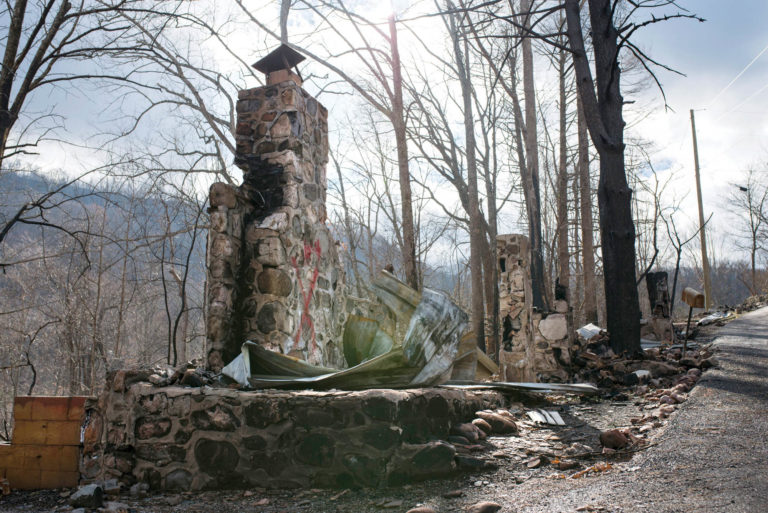
In Jefferson City, Tennessee, Fire Chief Lee Turner (Chattanooga ’95) watched ash rain down on Nov. 28. He’d already sent a crew to join the fight about an hour away in Gatlinburg. About 6 p.m., he received a call for help with incident command.
As he drove to Gatlinburg, he could see the orange-red glow of the mountains on fire.
At the command center, call after call came of people trapped or a neighbor’s house on fire.
“Where do you send your limited resources?” Turner says of that night. “It was triage. As we’d get resources in, we’d send them out.”
Russell Paterson (Knoxville ’91), division chief for training, risk and emergency management with the Brentwood, Tennessee, fire department, had seen warnings about the fire danger. At home in Middle Tennessee on Nov. 28, he followed the fire fight by watching a Knoxville television station’s online broadcast. The next day he was deployed to the command center. As he drove through Townsend, Tennessee, which has an entrance to the national park near Cades Cove, Paterson watched the fires, unstopped by the rain, burn on the hilltops.
In Gatlinburg, he saw a town vacated by cars and people. At the incident command center, he worked the night shift, directing crews to fires and to create fire lines to slow and halt the spread. Almost 800 firefighters from across Tennessee and the nation had been deployed to the park and Gatlinburg—many already working there before the Nov. 28 fire broke out.
Though the fire destroyed, Paterson saw hope through people’s actions—a firefighter traveling from Memphis to help, vast amounts of donated water and food, the motel manager who declined payment for a few hours’ rest.
“We talk about the volunteer spirit, and this is what we do,” Paterson says.
The fire, declared contained on Dec. 16, left about 18,000 acres and almost 2,500 structures burned. Sevier County officials have estimated damages at $500 million. Insurance companies have estimated the damage amounts could go higher.
Fourteen people died, including Knoxville alumnus Jon Summers, ’79, and his wife, Janet. They had traveled from Memphis with their three sons—Branson, Jared and Wesley— to celebrate a birthday. When the family tried to escape in their car, its path was soon blocked by debris. The family fled on foot and became separated. The sons were found injured in the woods.
In the days following Nov. 28, with Gatlinburg closed to all by emergency personnel, McLean and Johnson attended the daily press briefings, hoping to learn Buckberry’s fate. On the third day, a National Park Service official took them aside and reported only one building remained.
On Dec. 1, for one hour, McLean, his wife, Janet (Knoxville ’71), and Johnson returned to the rubble of what had been. The fire left ash and destruction as it played hopscotch, burning above and below and around the one remaining structure of rooms. Trying to take in the magnitude of the loss, they wandered the property.
“We started to think, ‘Where are the things?’ Then we realized that everything had been burned up. There was nothing but ashes,” McLean says.
The antiques, the family heirlooms like the Scottish military horse hair sporrans or the Kentucky long rifles or the drum major bear highland headdress—all destroyed.
Beside the rubble of a burned building, under a blackened tree encircled by the ashy remains of a bench and rocking chairs, Janet found a rocking chair, charred on one leg. It had survived.
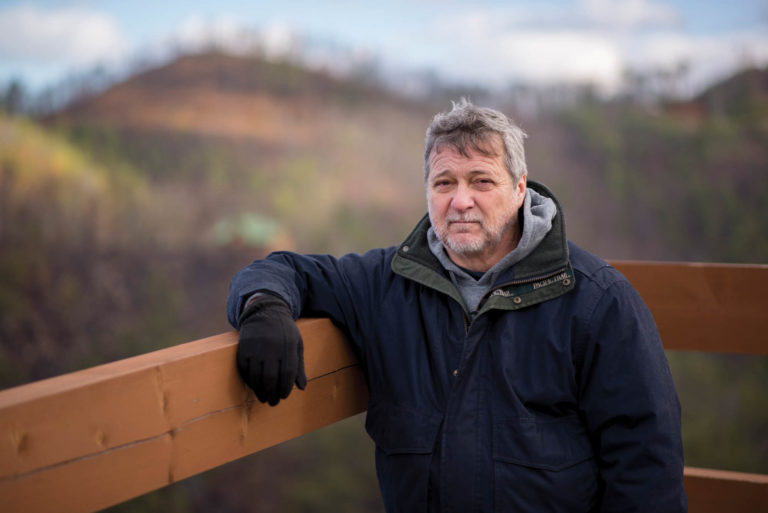
“I think we ought to use the rocking chair to pray for the resurrection and restoring of the mountains and Buckberry,” she said to the others.
The chair will have a place of honor in the rebuilt lodge, which takes its name from Buckberry Creek that runs through the property. It will be part of a new story woven around and through the lodge. For they do plan to rebuild, to again welcome visitors to views of Mount LeConte. The spirit of the lodge will survive the fire, just as the buckberry bush survives fires. The buckberry, with its deep roots, clings to mountainsides. Adapted to fires, the roots regenerate life. New life will come to the mountains, too, with green buds pushing aside the blackened earth.
“When the mountains come up this spring, they will be beautiful again,” McLean says. “The great thing is they were not scarred like they could have been.”’
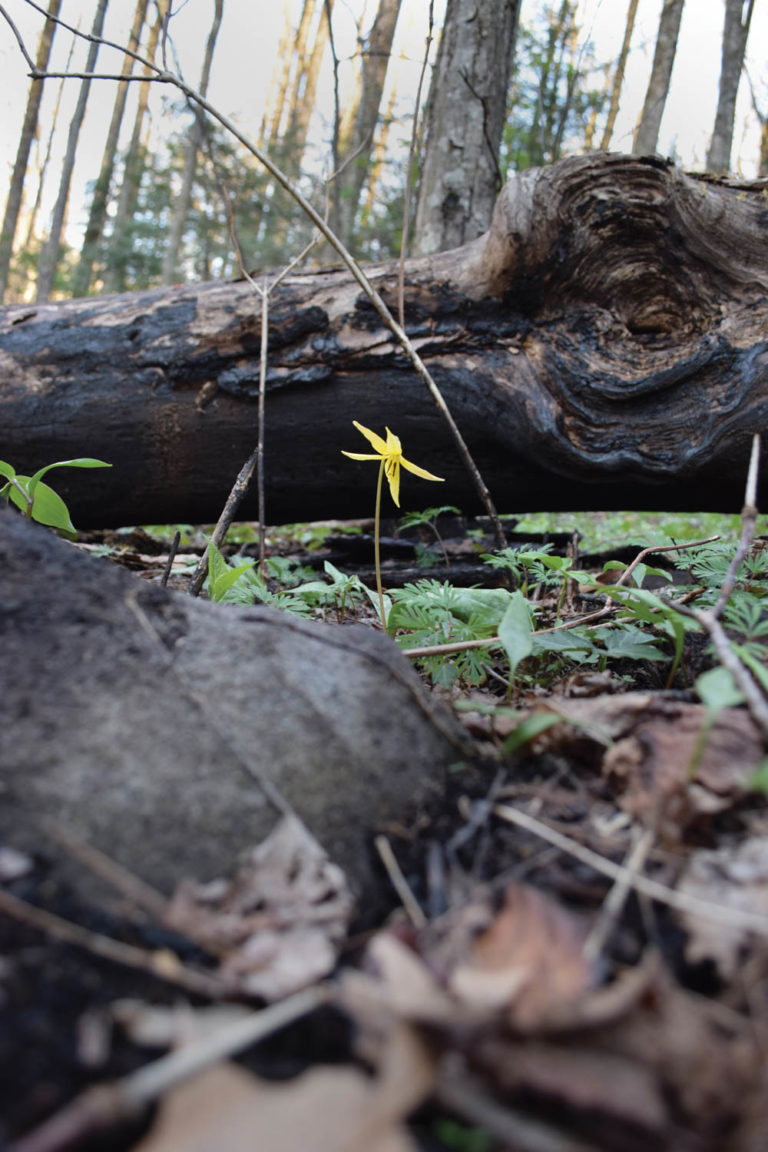
The fire, declared contained on Dec. 16, left about 18,000 acres and almost 2,500 structures burned. Sevier County officials have estimated damages at $500 million.
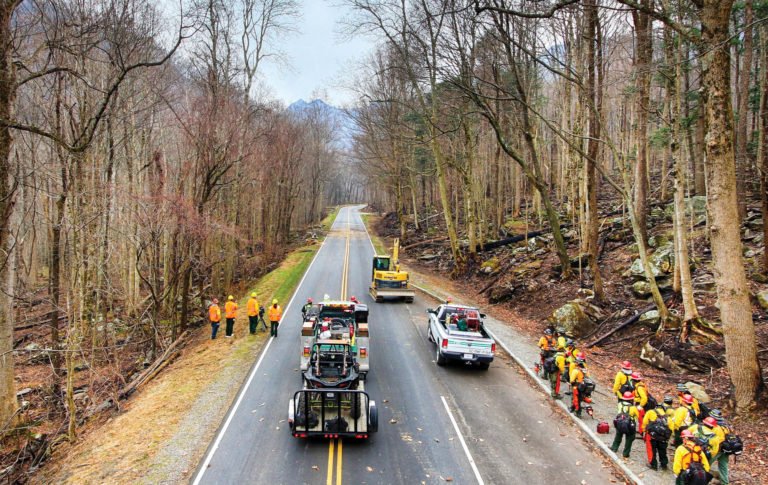
Just after the fire, McLean wondered if he could rebuild.
“I’m 70. Do I have one more left in me?” he says.
But then, through social media and letters, those gueststurned- friends reached out to share the stories of peace and healing they found at Buckberry. As one guest wrote about his family’s stay in a newsletter after the fire, “It had refreshed and renewed us no differently than if we had bathed in the River Jordan.”
Those friends also asked if Buckberry would be rebuilt. Lodge employees gathered the comments into a book that they gave McLean at Christmas. He knew then he would rebuild.
“It solidified our idea of doing that,” McLean says.
Two months after the fire, workers at Buckberry Lodge had removed the rubble, power washed the cement and cinderblock foundations, removed the stain of smoke and ash and fire. The purging that must be done for new life. Rebuilding the lodge will take about a year and half, and McLean plans to reopen in 2018.
“As long as we keep the authenticity, genuineness and ability to be absolutely real, we want to do it,” McLean says.
Sitting on the balcony of the remaining building, Johnson remembered it was the first one built in 2004.
“The irony is that we call this our guinea pig building because it was the first one that went up,” she says. “So this is helpful, too, that he is still here.”
On that balcony, the sound of life has returned to the mountain with the whirring of new electric lines being strung to the grumbling of the construction equipment. With it comes hope for the future.
“Good will come of this,” McLean says. “Good comes out of things that look like they’re adverse.”
